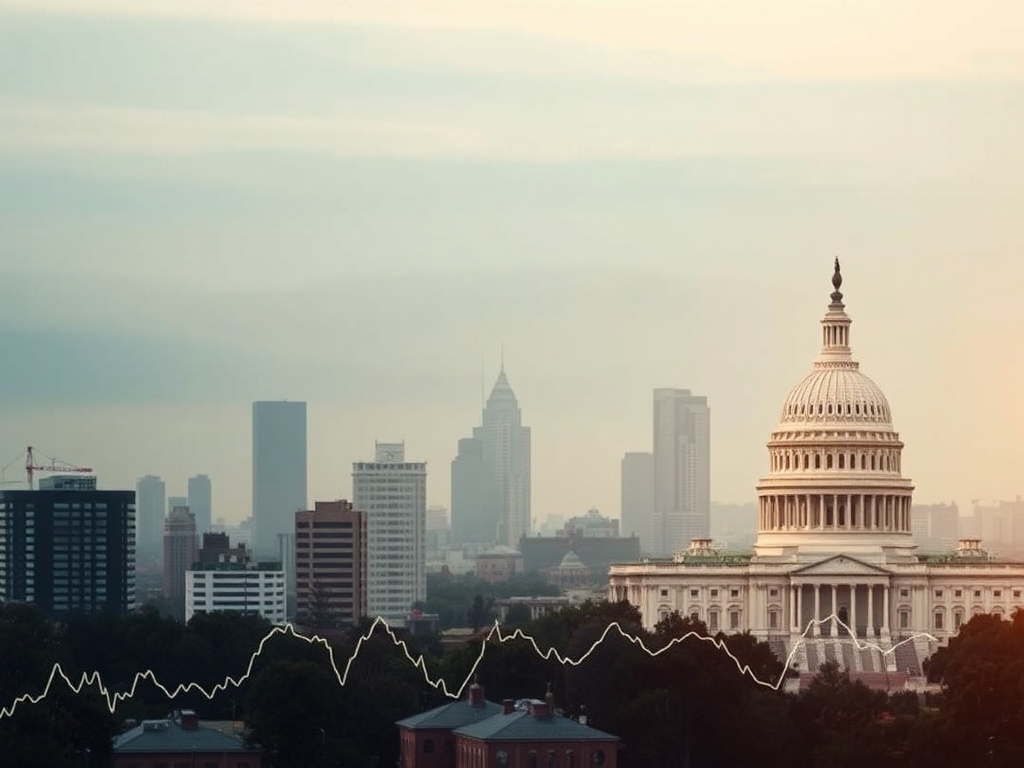Asia FX Faces Crucial Test: Dollar Subdued Ahead of Powell’s Interest Rate Clues
0
0

BitcoinWorld

Asia FX Faces Crucial Test: Dollar Subdued Ahead of Powell’s Interest Rate Clues
For cryptocurrency enthusiasts, understanding global macroeconomics is no longer optional; it’s essential. The ebb and flow of traditional financial markets, particularly the movements of Asia FX and the US Dollar, directly influence liquidity, investor sentiment, and ultimately, crypto asset valuations. As the world awaits the pivotal Fed Powell speech, market participants are bracing for potential shifts in monetary policy that could ripple across all asset classes, including digital currencies. The forthcoming insights on interest rates from the Federal Reserve will be a critical determinant for market direction, shaping investor decisions from Tokyo to New York, and impacting everything from bond yields to Bitcoin’s price trajectory.
Asia FX’s Cautious Stance: Why are Markets Subdued?
The foreign exchange markets across Asia have been notably subdued, reflecting a cautious “wait-and-see” approach ahead of the Federal Reserve’s critical announcements. This tranquility, however, masks underlying anxieties and strategic positioning by traders. Several factors contribute to this cautious environment:
- Economic Data Sensitivity: Asian economies, often export-driven, are highly susceptible to global economic health. Recent mixed signals from major trading partners, coupled with domestic inflation concerns, lead to hesitant currency movements.
- Geopolitical Undercurrents: Ongoing geopolitical tensions, particularly in the South China Sea and broader trade relations, inject an element of uncertainty that encourages investors to adopt a defensive posture, limiting aggressive currency plays.
- Capital Flow Dynamics: The prospect of higher interest rates in the United States often draws capital away from emerging markets, putting downward pressure on Asian currencies. Investors are currently holding back, anticipating clarity on the Fed’s stance before committing significant capital.
Currencies like the Japanese Yen, Chinese Yuan, and Korean Won have shown limited volatility, trading within narrow ranges. This subdued activity is a clear indication that market participants are absorbing existing information while meticulously preparing for new directives from the Federal Reserve, particularly regarding future monetary policy adjustments.
The US Dollar’s Dilemma: What’s Driving Its Current Performance?
The US Dollar, traditionally a beacon of stability and a global reserve currency, finds itself in a peculiar position. Despite persistent inflation and robust labor market data in the United States, its recent performance has been less than stellar, showing a subdued trend against major counterparts. This “dilemma” stems from a confluence of factors:
- Inflationary Pressures vs. Rate Hike Expectations: While inflation remains elevated, market participants are increasingly questioning the Federal Reserve’s ability or willingness to aggressively hike rates further without risking a significant economic slowdown. This uncertainty caps the dollar’s upside potential.
- Yield Differentials: The narrowing gap between US bond yields and those of other developed nations, particularly as other central banks begin to tighten their own monetary policy, reduces the attractiveness of dollar-denominated assets.
- Risk Sentiment: The dollar’s role as a safe-haven asset is often diminished during periods of moderate risk appetite. When investors are not fleeing to safety, the dollar’s demand can wane, leading to sideways trading.
Analysts are closely watching the dollar index (DXY) for any signs of a breakout or breakdown, as its trajectory will have significant implications for global trade, commodity prices, and cross-border investments. The dollar’s muted reaction indicates a market that has largely priced in current expectations, but remains highly sensitive to any unexpected hawkish or dovish signals from the Fed.
Anticipating the Fed Powell Speech: A Turning Point for Monetary Policy?
All eyes are on Federal Reserve Chair Jerome Powell’s upcoming speech, which is widely anticipated to provide crucial insights into the future direction of US monetary policy. These pronouncements are not merely academic; they are the bedrock upon which global financial markets make decisions. Key aspects investors will be scrutinizing include:
- Inflation Outlook: Will Powell reiterate the Fed’s commitment to bringing inflation down to its 2% target? Any deviation from this stance, or new projections, could trigger significant market reactions.
- Labor Market Assessment: The strength of the US labor market has been a key factor supporting the Fed’s hawkish stance. Powell’s comments on employment trends and wage growth will be vital in gauging the sustainability of the current economic expansion.
- Future Rate Path: This is arguably the most critical element. While the Fed has signaled a data-dependent approach, any hints regarding the pace, magnitude, or duration of future interest rates adjustments will directly impact borrowing costs, corporate earnings, and investment strategies worldwide.
- Quantitative Tightening (QT): Beyond rate hikes, markets will also listen for any commentary on the Fed’s balance sheet reduction program. The pace of QT can also influence liquidity and market conditions.
A hawkish tone, emphasizing continued vigilance against inflation and potential further rate hikes, could bolster the US Dollar and put pressure on risk assets. Conversely, a more dovish stance, suggesting a pause or even cuts in the near future, might weaken the dollar and provide a tailwind for equities and potentially cryptocurrencies. The speech is truly a potential turning point, capable of recalibrating market expectations across the board.
Interest Rates and Global Repercussions: What’s at Stake?
The Federal Reserve’s decisions on interest rates resonate far beyond American borders, sending ripples across the global financial system. The stakes are incredibly high, influencing everything from corporate borrowing costs to the affordability of consumer loans and the attractiveness of investment destinations. Here’s what’s at stake:
| Impact Area | Potential Repercussions of Higher US Interest Rates | Potential Repercussions of Lower US Interest Rates |
|---|---|---|
| Emerging Markets (EM) | Increased capital outflows, currency depreciation (e.g., in Asia FX), higher debt servicing costs for dollar-denominated debt, potential financial instability. | Increased capital inflows, currency appreciation, reduced debt servicing costs, potentially stimulating economic growth. |
| Global Trade | A stronger US Dollar makes US exports more expensive and imports cheaper, impacting trade balances globally. Higher borrowing costs can stifle global investment. | A weaker US Dollar makes US exports cheaper and imports more expensive, potentially boosting global trade volumes. Lower borrowing costs encourage investment. |
| Commodity Prices | Commodities, often priced in USD, become more expensive for non-dollar holders, potentially dampening demand. | Commodities become cheaper for non-dollar holders, potentially boosting demand. |
| Corporate Borrowing | Higher borrowing costs for companies globally, potentially leading to reduced investment, slower expansion, and tighter profit margins. | Lower borrowing costs encourage corporate investment, expansion, and potentially higher profits. |
For investors, understanding these repercussions is paramount. A shift in the Fed’s rate outlook can dictate whether capital flows towards or away from certain regions and asset classes. The interconnectedness of global finance means that even a nuanced change in language from Chair Powell can have profound and lasting effects on market dynamics and investment opportunities.
Navigating the Volatility: Actionable Insights for Investors
In anticipation of the Fed Powell speech and its potential impact on Asia FX, the US Dollar, and global interest rates, investors should consider several actionable insights to navigate the impending volatility:
- Stay Informed and Agile: Closely monitor official Fed statements, economic data releases, and expert analyses. Be prepared to adjust your portfolio quickly based on new information. Rigidity in such dynamic times can be costly.
- Diversify Your Portfolio: While a specific event might impact certain asset classes more than others, a well-diversified portfolio across different asset types (equities, bonds, commodities, and even cryptocurrencies) can help mitigate risks. Consider geographic diversification, especially within Asia, to spread exposure.
- Manage Risk Exposure: Implement stop-loss orders for highly volatile positions, and consider reducing leverage if you are involved in margin trading. Volatility can be a double-edged sword, offering opportunities but also significant downside risks.
- Consider Hedging Strategies: For those with significant exposure to particular currencies, exploring hedging instruments like options or forward contracts can protect against adverse currency movements. This is particularly relevant for businesses with international trade exposure.
- Focus on Long-Term Fundamentals: While short-term reactions to the speech can be dramatic, long-term investors should revisit the fundamental strengths of their holdings. Companies with strong balance sheets and robust business models are better positioned to weather macroeconomic shifts.
The period surrounding major central bank announcements is often characterized by heightened uncertainty. By adopting a proactive and informed approach, investors can better position themselves to capitalize on opportunities and minimize potential losses.
Conclusion: The Imperative of Vigilance in a Shifting Landscape
The current subdued state of Asia FX and the US Dollar serves as a powerful testament to the market’s profound anticipation of the upcoming Fed Powell speech. This event is not just another policy address; it is a critical juncture that will provide much-needed clarity on the Federal Reserve’s path for monetary policy and, most importantly, the trajectory of interest rates. The repercussions will echo across global markets, influencing everything from bond yields and equity valuations to the liquidity and appeal of alternative assets like cryptocurrencies.
In this interconnected financial world, vigilance is not merely a recommendation; it is an imperative. The signals from Washington will determine the flow of capital, shape economic growth prospects, and ultimately define the landscape for investors worldwide. As we stand at the precipice of these pivotal announcements, staying informed, adapting strategies, and managing risk will be key to navigating the opportunities and challenges that lie ahead. The financial world is holding its breath, ready to react to every word.
To learn more about the latest Forex market trends, explore our article on key developments shaping the US Dollar and global interest rates liquidity.
This post Asia FX Faces Crucial Test: Dollar Subdued Ahead of Powell’s Interest Rate Clues first appeared on BitcoinWorld and is written by Editorial Team
0
0
 Manage all your crypto, NFT and DeFi from one place
Manage all your crypto, NFT and DeFi from one placeSecurely connect the portfolio you’re using to start.





